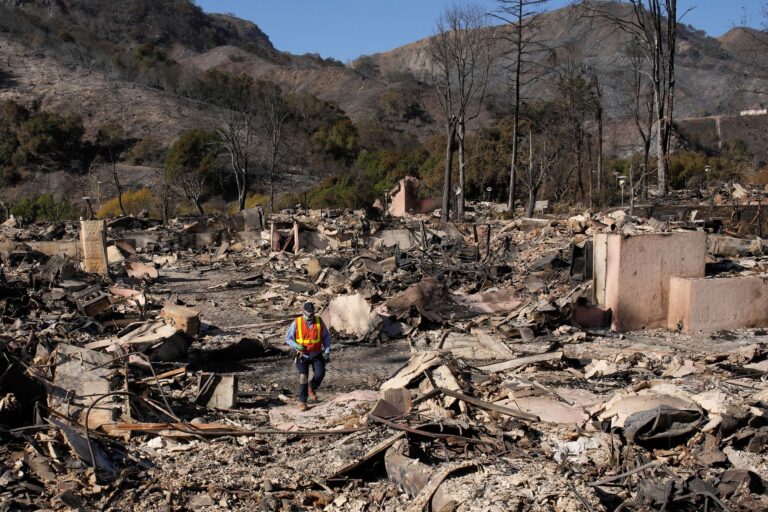Wildfire Insurance Crisis in Southern California: A Growing Threat to Homeowners
Escalating Insurance Barriers in Fire-Prone Areas
Homeowners residing in wildfire-vulnerable zones of Southern California are increasingly confronted with the harsh reality of losing access to affordable home insurance. Insurers, grappling with surging claims and the erratic nature of wildfire behaviour, have either withdrawn coverage or imposed steep premium hikes. This trend forces many families into precarious financial positions,often compelling them to self-insure or remain uninsured. The aftermath of wildfires can be financially ruinous,stripping away not only physical homes but also the economic foundation of affected households.
Primary obstacles faced by these homeowners include:
- Scarcity of Providers: A shrinking pool of insurers willing to underwrite high-risk properties.
- Unsustainable Premiums: Insurance costs rising beyond the reach of many residents.
- Severe Financial Exposure: Homeowners bearing full reconstruction costs post-disaster.
- Volatile Insurance Market: Fluctuating availability of coverage creating uncertainty.
| Year | Average Premium Increase | Number of Policies Cancelled |
|---|---|---|
| 2021 | 28% | 15,000 |
| 2022 | 35% | 22,000 |
| 2023 | 42% | 30,500 |
Insurance Denials Amplify Wildfire Vulnerability in Los Angeles
In the months leading up to the recent destructive wildfires, thousands of Southern California homeowners experienced the abrupt cancellation or denial of their fire insurance policies. Insurers, citing heightened wildfire risks, withdrew coverage en masse, leaving many without the financial protections essential for recovery. This lack of insurance transformed homes into vulnerable targets, intensifying the devastation beyond the physical damage caused by the fires.
Communities affected by these insurance gaps faced important hardships, such as:
- Heightened Financial Loss: Homeowners were forced to cover rebuilding expenses entirely on their own.
- Delayed Recovery and Relocation: Absence of insurance payouts hindered timely rebuilding or moving efforts.
- Emotional and Economic Strain: Residents endured increased stress due to uncertainty and financial insecurity.
| Insurance Status | Number of Residents Affected | Rebuilding Rate |
|---|---|---|
| Denied or Cancelled | 15,000+ | 30% |
| Maintained Coverage | 10,000 | 75% |
The Personal Impact of Insurance Shortfalls Amid Wildfire Disasters
For many Angelenos,the crisis began well before the flames arrived. Skyrocketing insurance premiums and widespread policy cancellations left families exposed and without a critical safety net. The consequences extend far beyond the loss of property,encompassing profound emotional distress and financial instability. Survivors face a complex web of challenges, including:
- Displacement and Housing Insecurity: Many cannot afford to rebuild or find new homes.
- Mental Health Struggles: Trauma from the fires and loss leads to increased anxiety and depression.
- Community Disintegration: Neighborhoods fracture under the pressure of uncertainty and loss.
This growing crisis underscores the urgent need for complete policy reforms and enhanced support systems to safeguard vulnerable populations in wildfire-prone regions.
Effective Measures to Protect Homes Against Rising Wildfire Risks
As wildfires become more frequent and severe, homeowners must adopt proactive strategies to shield their properties. The loss of insurance coverage, as seen in Los Angeles, highlights the importance of risk reduction efforts. Key preventative actions include:
- Establishing Defensible Space: Removing flammable vegetation and debris around homes to reduce fire fuel.
- Utilizing Fire-Resistant Materials: Incorporating non-combustible roofing and siding to lower ignition chances.
- Installing Ember-Resistant Vents: Preventing embers from entering attics and crawl spaces.
Financially, homeowners should consider option insurance avenues such as state-sponsored wildfire insurance pools or specialty carriers focusing on high-risk zones. Additionally, reinforcing homes through structural upgrades and maintaining current emergency preparedness plans can enhance resilience. The table below summarizes these actions and their benefits:
| Preventative Action | Safety Benefit | Effect on Insurance |
|---|---|---|
| Clearing Brush and Trees | Reduces combustible material near structures | Improves insurer risk assessment |
| Fire-Resistant Roofing | Decreases likelihood of ignition | Potentially lowers premiums |
| Sprinkler System Installation | Enhances active fire defense | Demonstrates mitigation efforts to insurers |
- Stay Updated: Monitor local fire danger levels and evacuation notices regularly.
- Participate in Community Fire Safety Programs: Engage with neighborhood initiatives to reduce wildfire risks.
- Review Insurance Policies Frequently: Ensure coverage aligns with evolving wildfire threats and regulations.
Final Thoughts: Addressing the Intersection of Wildfires and Insurance Challenges
The harrowing experiences of Southern California homeowners—first losing insurance coverage and then facing the devastation of wildfires—highlight a critical and escalating crisis. As climate change intensifies wildfire frequency and severity, the insurance industry’s retreat from high-risk areas leaves many families dangerously exposed. Without comprehensive policy interventions and enhanced community support, more residents risk losing not only their homes but also the financial and emotional resources necessary for recovery. These events serve as a stark call to action for policymakers, insurers, and communities to collaborate on lasting solutions that protect vulnerable homeowners in an era of increasing environmental uncertainty.




